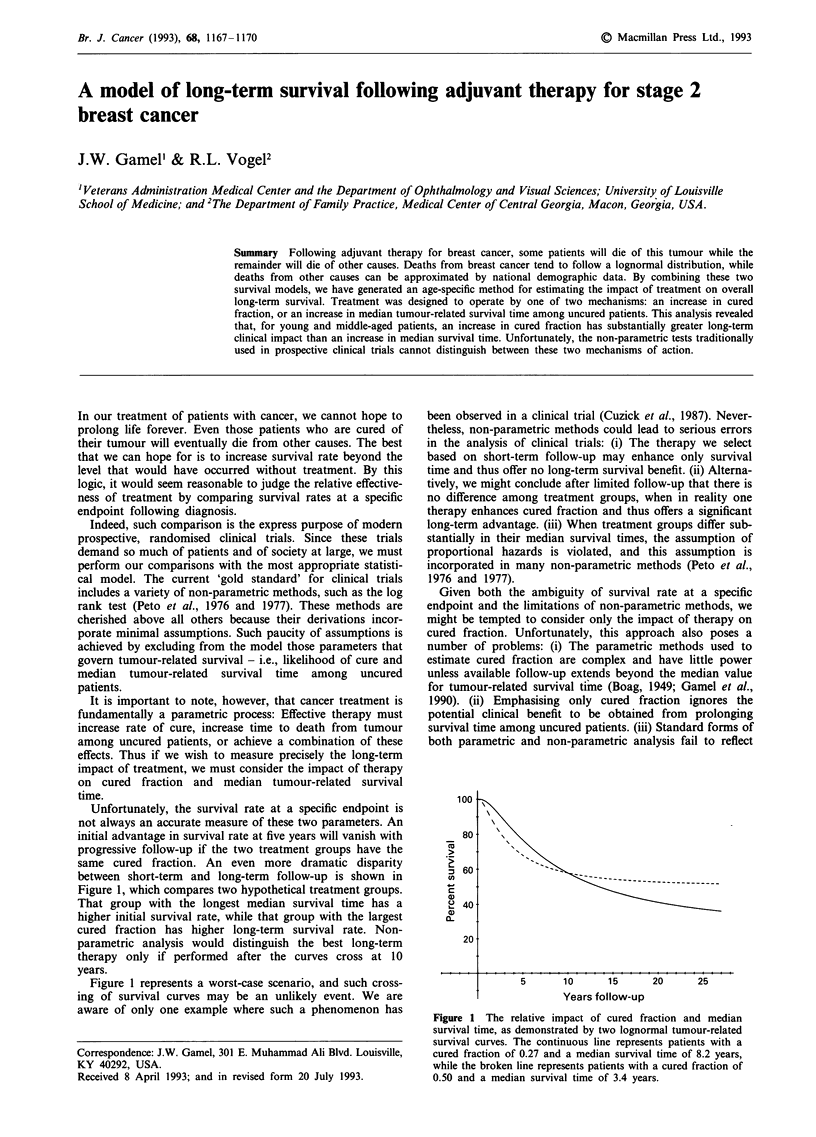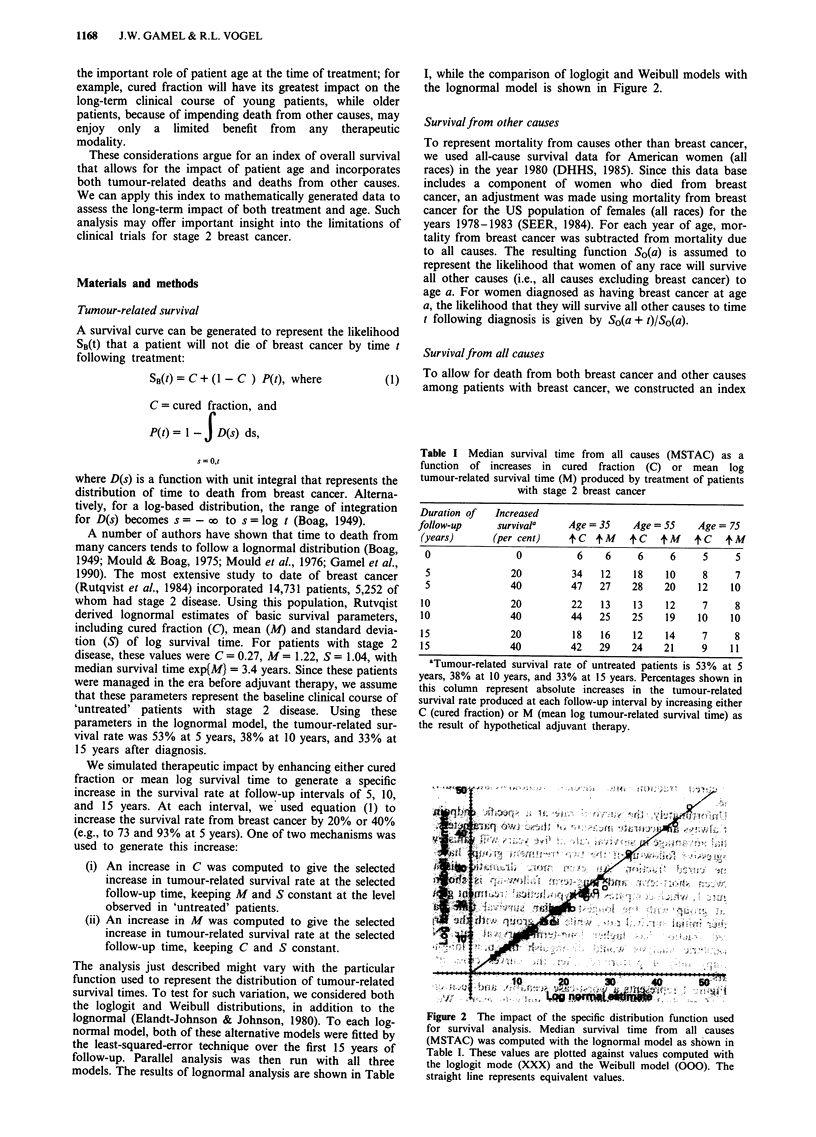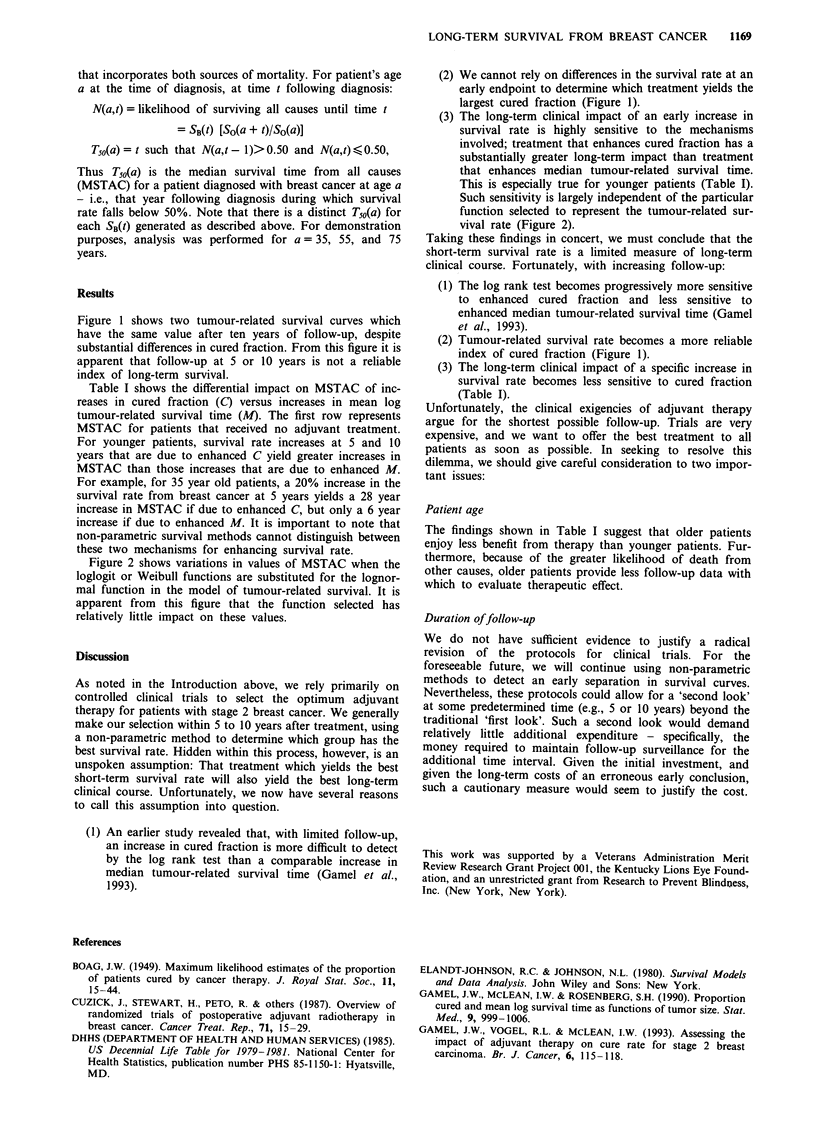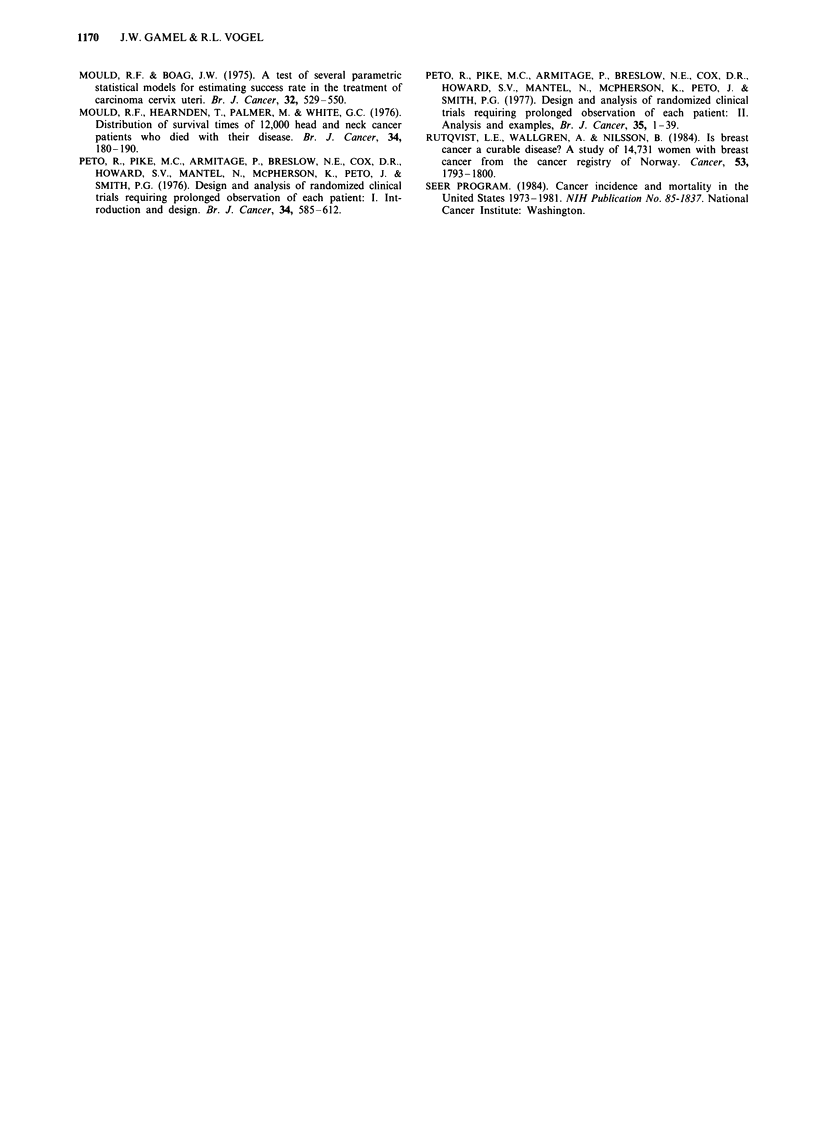Abstract
Following adjuvant therapy for breast cancer, some patients will die of this tumour while the remainder will die of other causes. Deaths from breast cancer tend to follow a lognormal distribution, while deaths from other causes can be approximated by national demographic data. By combining these two survival models, we have generated an age-specific method for estimating the impact of treatment on overall long-term survival. Treatment was designed to operate by one of two mechanisms: an increase in cured fraction, or an increase in median tumour-related survival time among uncured patients. This analysis revealed that, for young and middle-aged patients, an increase in cured fraction has substantially greater long-term clinical impact than an increase in median survival time. Unfortunately, the non-parametric tests traditionally used in prospective clinical trials cannot distinguish between these two mechanisms of action.
Full text
PDF



Selected References
These references are in PubMed. This may not be the complete list of references from this article.
- Cuzick J., Stewart H., Peto R., Baum M., Fisher B., Host H., Lythgoe J. P., Ribeiro G., Scheurlen H., Wallgren A. Overview of randomized trials of postoperative adjuvant radiotherapy in breast cancer. Cancer Treat Rep. 1987 Jan;71(1):15–29. [PubMed] [Google Scholar]
- Gamel J. W., McLean I. W., Rosenberg S. H. Proportion cured and mean log survival time as functions of tumour size. Stat Med. 1990 Aug;9(8):999–1006. doi: 10.1002/sim.4780090814. [DOI] [PubMed] [Google Scholar]
- Gamel J. W., Vogel R. L., McLean I. W. Assessing the impact of adjuvant therapy on cure rate for stage 2 breast carcinoma. Br J Cancer. 1993 Jul;68(1):115–118. doi: 10.1038/bjc.1993.296. [DOI] [PMC free article] [PubMed] [Google Scholar]
- Mould R. F., Boag J. W. A test of several parametic statistical models for estimating success rate in the treatment of carcinoma cervix uteri. Br J Cancer. 1975 Nov;32(5):529–550. doi: 10.1038/bjc.1975.259. [DOI] [PMC free article] [PubMed] [Google Scholar]
- Mould R. F., Hearnden T., Palmer M., White G. C. Distribution of survival times of 12,000 head and neck cancer patients who died with their disease. Br J Cancer. 1976 Aug;34(2):180–190. doi: 10.1038/bjc.1976.141. [DOI] [PMC free article] [PubMed] [Google Scholar]
- Peto R., Pike M. C., Armitage P., Breslow N. E., Cox D. R., Howard S. V., Mantel N., McPherson K., Peto J., Smith P. G. Design and analysis of randomized clinical trials requiring prolonged observation of each patient. I. Introduction and design. Br J Cancer. 1976 Dec;34(6):585–612. doi: 10.1038/bjc.1976.220. [DOI] [PMC free article] [PubMed] [Google Scholar]
- Peto R., Pike M. C., Armitage P., Breslow N. E., Cox D. R., Howard S. V., Mantel N., McPherson K., Peto J., Smith P. G. Design and analysis of randomized clinical trials requiring prolonged observation of each patient. II. analysis and examples. Br J Cancer. 1977 Jan;35(1):1–39. doi: 10.1038/bjc.1977.1. [DOI] [PMC free article] [PubMed] [Google Scholar]
- Rutqvist L. E., Wallgren A., Nilsson B. Is breast cancer a curable disease? A study of 14,731 women with breast cancer from the Cancer Registry of Norway. Cancer. 1984 Apr 15;53(8):1793–1800. doi: 10.1002/1097-0142(19840415)53:8<1793::aid-cncr2820530832>3.0.co;2-y. [DOI] [PubMed] [Google Scholar]


